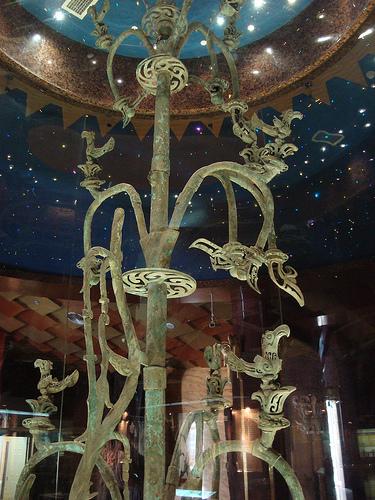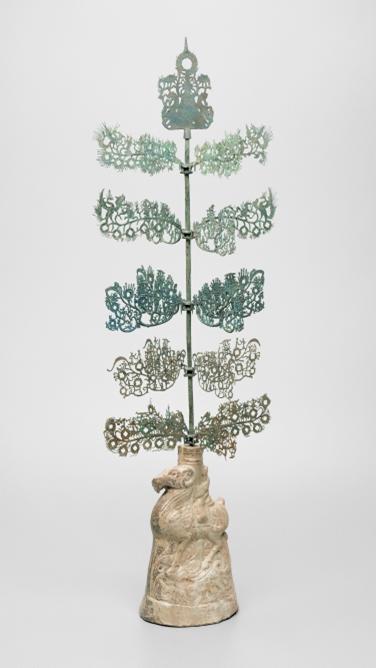Hi all,
I too greatly enjoyed Louis'
Salon. Interesting, and very well presented.
I have had the
opportunity to spend some time in SW China (Sichuan Province,
specifically) and like most ruggies tend to try to draw parallels between
designs and forms in different cultures.
There is a marvelous
museum outside Chengdu that presents artifacts from an ancient
civilization in this region. Interestingly, some have speculated that it
was part of an ancient trading route to Central Asia and
beyond.
Numerous remarkable artifacts have been found, dated to the
Han Dynasty and much before.
What piqued my interest were the
bronze "money tree" figures. There is a rich mythology around them that
relates to prosperity (naturally). I noted a couple of interesting
features that relate to this discussion and engsi iconography. First, is
the presence of animals at the base of the money trees. Second is the
depiction of birds on the branches of the trees. I have wondered whether
this might be another stream of iconography that could be added to the
hypotheses surrounding the origin of the design of animal tree and other
engsi.
James

